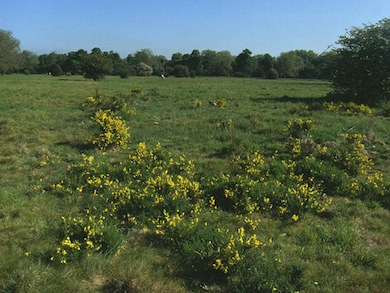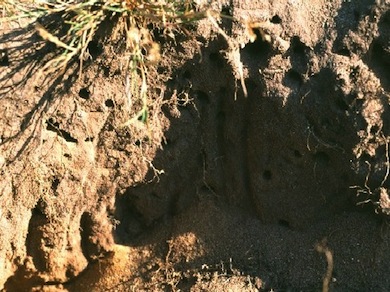This site is more open and urban in character when compared with Epping Forest North, and contains some of London’s most extensive acid grassland. The site is made up of three components; Wanstead Flats, Wanstead Park and Bush Wood. Wanstead Flats forms the southern-most part of Epping Forest. It is a large area of open rough grassland with three lakes, and part of it is designated as a Site of Special Scientific Interest. Bush Wood is a small ancient woodland, mostly of oak with some sweet chestnut and hornbeam. Wanstead Park is owned by the City of London and was landscaped over 200 years ago. It was originally attached to Wanstead House, which was demolished in the early 1800s – the remnants now lie beneath Wanstead Golf Course. The Temple, one of the house’s garden buildings, is Grade II listed and is open to visitors in summer. As a whole Epping Forest is the largest public open space in London and won a Green Flag Award again for 2022. Redbridge Walk to Health Initiative and Newham Striders both use part of this site as part of the Walking the Way to Health (WHI) schemes.
Local Wildlife Site
Accessible Sites of Importance for Nature Conservation
Epping Forest South
Borough: Newham, Redbridge, Waltham Forest
Grade: Metropolitan
Access: Free public access (all/most of site)
Area: 306.83 ha
Description
Wildlife
In Wanstead Flats the most interesting plant life is to be found in the acid grassland. It is dominated by wavy hair-grass and various bents and fescues, with patches of mat-grass, heath-rush, heath wood-rush and creeping willow. Wall barley is found in disturbed areas and by roadsides. Small areas of heather are also present, together with petty whin. In total, 780 species of flowering plants have been recorded. The insect life is also exceptional, with the assemblage of species found typically around the Thames estuary especially well-represented. In all, 23 species of butterflies have been recorded, as well as numerous species of bees, wasps, ants and spiders, including the nationally rare digger-wasp Diodontus insidiosus. Bats, reptiles and amphibians are also to be seen on the site. Bush Wood is mostly English oak, with some large sweet chestnuts and thickets of hawthorn and holly. It also features mature hornbeam trees, which are their natural shape unlike those pollarded in other parts of Epping Forest. In all 22 species of tree have been documented here. Wanstead Park is more formal than the rest of Epping Forest, consisting of old parkland, acid grassland and a series of interconnected ornamental lakes. Here grey herons are often seen, a reminder of the famous heronry here at the turn of the century. This is a delightful area in springtime when bluebells and the many migrant birds can be appreciated.Facilities
Information (at City of London depot in Wanstead Park); car parking; visitor centre; exhibitions; waymarked walking trails; fishing; pond dipping; playing fields
Gorse in flower at Wanstead Flats © Ian Yarham

Nest-holes of burrowing bees and wasps © Mike Waite
Feedback
Have a question or a comment for this site, or notice anything missing or out of date? Please contact us.
